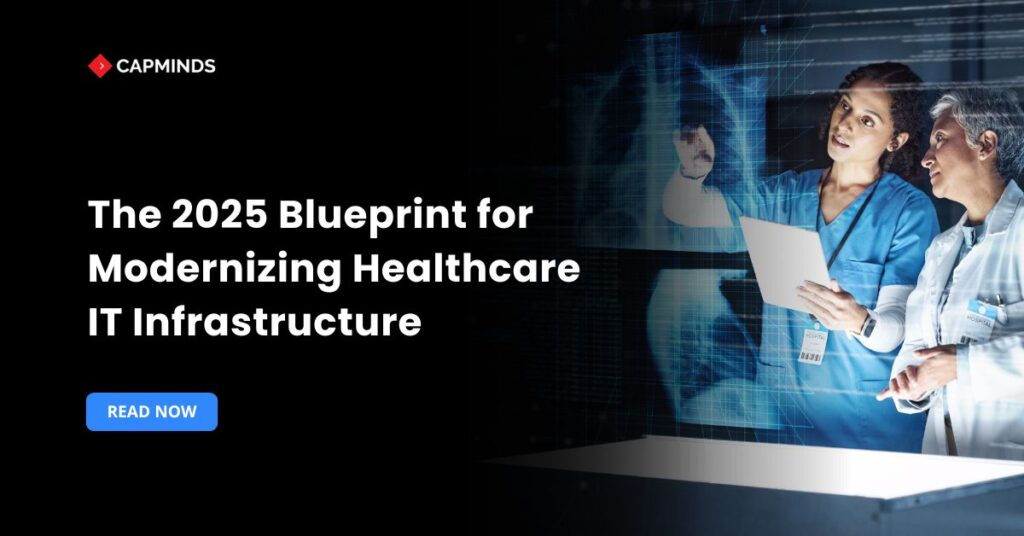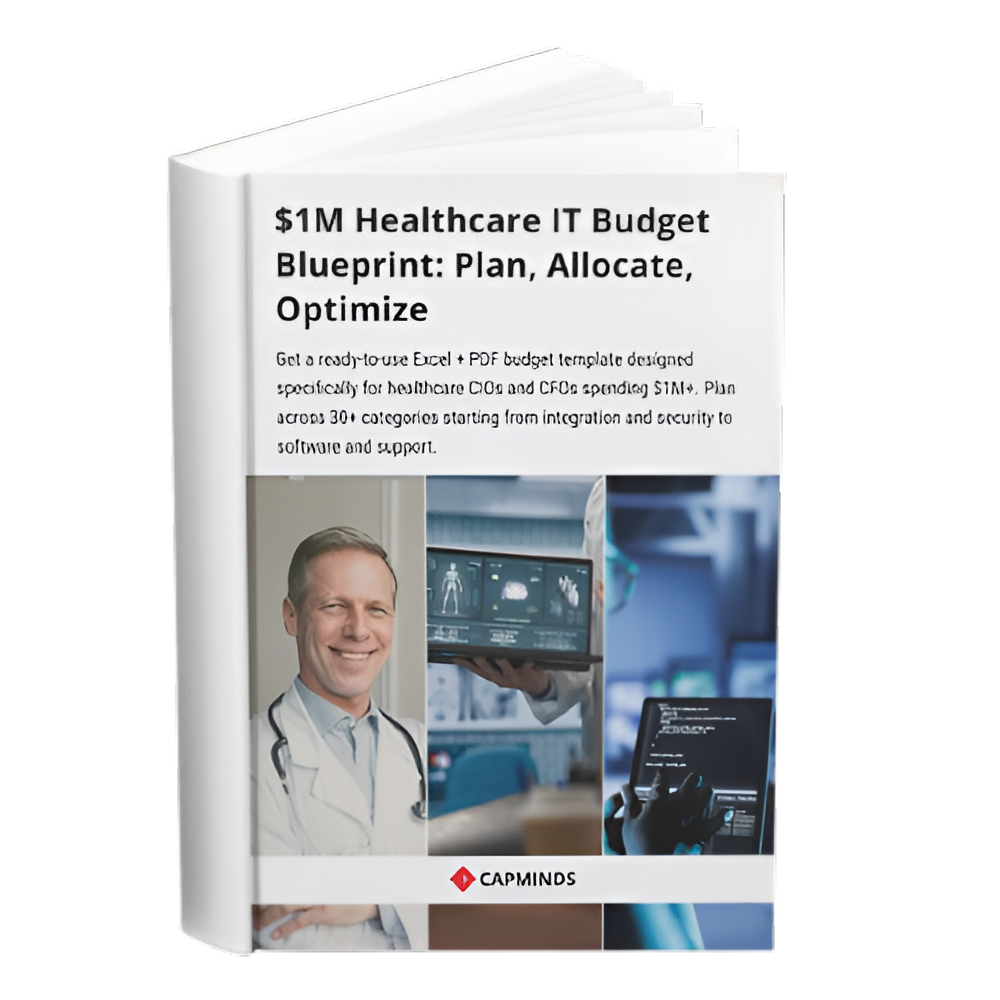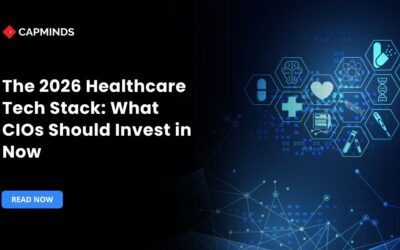The 2025 Blueprint for Modernizing Healthcare IT Infrastructure
Healthcare IT is at an inflection point. After years of underinvestment and the shock of the pandemic, providers face mounting pressure to modernize networks, applications, and workflows. In 2025, digital transformation accelerates worldwide, driven by goals to boost efficiency, productivity, and patient experience. For example, a Deloitte survey found ~90% of healthcare executives expect technology use to accelerate in 2025, with half anticipating a “significant impact”.
At the same time, healthcare faces unprecedented challenges – chronic clinician shortages, ransomware threats (2023 was the worst year ever for breaches), and shifting consumer demands. Cyberattacks are now “threat-to-life” events that can halt care; in 2024, there were over 380 reported attacks on U.S. providers and suppliers, with far-reaching impacts like the nationwide Change Healthcare breach.
These pressures make 2025 pivotal: it’s the year when cloud, AI, and EHR capabilities are mature enough (and mandated enough) to drive a true infrastructure overhaul.
Healthcare IT Modernization Blueprint
Cloud Computing
Cloud adoption is now mainstream in healthcare, but full maturity is still a goal. Most large health systems have adopted some cloud services for non-clinical workloads, and major providers like Kaiser Permanente have invested heavily. For instance, Kaiser’s multi-year partnership with Microsoft and Accenture focuses on “an innovative, scalable hosted cloud environment” for its 12.4 million members and 85,000 clinicians.
By the mid-2020s, many EHR and clinical systems will be moving to cloud platforms (Epic, Cerner, and Meditech all offer hosted versions), supporting data exchange, analytics, and disaster recovery. A recent CDW survey found 63% of healthcare IT leaders cite improved reliability and disaster recovery as the top cloud benefit, while 56% highlight better remote access to data and applications.
These advantages are crucial for 24×7 availability and coordination across multiple sites. Other promised gains include scalability to handle big data (genomics, imaging), and flexibility to spin up new services or telehealth offerings on demand.
Challenges in Healthcare Cloud Computing
Yet serious challenges remain. Security and compliance are paramount: 71% of health IT leaders said security concerns were the reason they moved cloud-hosted apps back on-premises. Protecting protected health information in the cloud requires strong governance, encryption, identity management and zero-trust architectures. Providers must also modernize legacy networks and medical-device ecosystems to take advantage of cloud segmentation and automation.
On the cost side, many CIOs have found that cloud migrations can even increase spending in the short term, so “cost savings” is often a secondary benefit. Staffing is another constraint: only 43% of healthcare IT teams feel they manage cloud environments “very effectively,” versus 50% in other industries.
Going forward, best practices include partnering with experienced cloud providers, retraining IT staff on cloud-native tools, and migrating workloads (like older Windows servers) into the cloud for continued support.
Key Points to Consider for Healthcare Cloud Computing
- Current State: Growing adoption for backup, EHR hosting, analytics, and telehealth. Major systems (e.g., Kaiser, Intermountain, UPMC) are moving core systems to Azure/AWS to handle scale.
- Opportunities: Scalability on demand; ubiquitous data access for clinicians (even remote workers); improved disaster recovery and business continuity. Enables new services like predictive analytics and virtual care.
- Challenges: Data security/privacy (HIPAA compliance); cloud cost management; integration of legacy equipment; need for cloud management skills.
Related: Healthcare IT Budgeting: What You Should Spend On in 2025 (And What to Avoid)
Artificial Intelligence
The AI revolution is rapidly reshaping care delivery. In 2023–24, we saw an explosion of interest in generative AI and advanced analytics: by late 2024, 85% of surveyed healthcare leaders were already exploring or deploying generative AI tools. Early use cases center on “agentic” assistants and workflow automation.
- For example, radiology has seen broad pilots: Cleveland’s University Hospitals deployed Aidoc’s AI platform system-wide to analyze CT scans for acute findings (pulmonary embolism, pneumothorax, etc.), speeding diagnosis and triaging urgent cases.
- In the Google Cloud Next ’25 conference, Seattle Children’s Hospital demoed an AI “Pathway Assistant” using Gemini to answer clinician queries at the point of care.
- Hackensack Meridian is testing Google’s Gemini-powered assistant to draft clinical encounter notes, freeing physicians from administrative dictation.
- Insurers like Highmark use AI to streamline claims processing and fraud detection (reducing costs and errors). These examples illustrate how AI can boost productivity, reduce clinician paperwork, and personalize patient engagement.
By end-2025 we expect AI to be integrated across the IT stack. Major EHR vendors (Epic, Meditech, Oracle) are embedding AI-driven decision support (predictive risk scores, automated chart reviews) and natural language tools. Common use cases include: automating clinical documentation, interpreting images/labs, predicting patient deterioration, personalizing treatment recommendations, and analyzing population health data.
FHIR-based APIs and cloud platforms now make it easier to plug in third-party AI modules. A recent McKinsey survey found many organizations are moving AI beyond pilot – most have multiple use cases in implementation, especially for administrative efficiency and clinical productivity.
Challenges in Healthcare AI
However, barriers remain significant. Data privacy is a top concern: 65% of IT leaders reported avoiding AI projects out of fear of violating patient privacy when using LLMs. Model bias and diagnostic errors raise clinical risk. Regulatory frameworks (FDA approval for AI-driven devices, HIPAA guidance on AI, etc.) are still evolving. Also, clinicians are wary of AI replacing judgment; Kaiser’s new head of AI emphasizes that algorithms assist rather than replace clinicians.
To be successful, AI deployment requires solid data foundations (clean, interoperable data), robust governance (transparent models, monitoring), and user engagement to build trust. But the consensus is clear: by 2025, AI will be an indispensable part of the healthcare IT “toolbox,” helping to triage patients, optimize schedules, and turn raw data into actionable insights.
Key Points to Consider While Implementing AI in Healthcare
- Current State: Rapid adoption of pilot projects in imaging analysis, NLP documentation, and administrative tasks. Surveyed leaders report moving beyond proofs-of-concept into implementation.
- Opportunities: Automate routine work (notes, billing); predictive analytics (identify high-risk patients); clinical decision support; patient-facing bots for triage/education. Can improve accuracy and free clinicians to focus on care.
- Challenges: Data privacy and security (HIPAA compliance, consent); algorithmic bias (must ensure equity); clinician acceptance and training; regulatory approval processes. Need clear governance and pilot-testing of models.
Related: Build vs. Buy? Why Custom EHR Systems Are the New Competitive Edge in Healthcare IT
EHR Modernization
Electronic Health Records (EHRs) are ubiquitous in 2025, but many systems are “mature” and in need of overhaul. Virtually all U.S. hospitals now have certified EHRs, yet usability, interoperability and cost remain chronic issues. The 21st Century Cures Act and ONC certification rules have forced connectivity and patient access, but providers still struggle with siloed data and clinician burnout from clunky interfaces. Modernizing the EHR means
- Updating to cloud-based or SaaS platforms
- Integrating FHIR APIs
- Adopting new modules (e.g., AI scribes, patient engagement tools)
- Consolidating fragmented systems.
For example, several health systems are undertaking major migrations: University Hospitals (Cleveland) recently completed its move from an aging system to Epic, while Intermountain Health and UPMC have announced multi-year projects to replace Cerner and other legacy EHRs with Epic by 2025. These migrations are immensely costly (Broward Health is spending $250M to switch to Epic) but promise a unified platform for care coordination and advanced functionality.
On the interoperability front, new policies have mandated data sharing. API standards (FHIR, SMART on FHIR) now allow patient apps to retrieve records, and health information exchanges (HIEs) are reinvigorated by ONC’s TEFCA framework. Providers are also building interfaces to external data (pharmacies, labs, patient-generated data).
An important trend is “modular EHR” – the idea that specialized apps (e.g., patient registries, AI tools) plug into the core record. This breaks the old one-size-fits-all model and lets organizations innovate faster. By 2025, many health systems will run their EHRs on cloud infrastructure (e.g., Epic on AWS/Azure) with standardized interfaces.
Challenges in EHR Modernization
Yet hurdles remain. Legacy systems are deeply embedded – some “Meditech” or custom systems are over 20 years old. Transitioning to these requires careful planning and training. Clinician dissatisfaction is high; surveys by AMA and others rank EHR usability among the top causes of burnout.
Vendors must continually improve UX (voice interfaces, better mobile access, easier order entry). Data migration and cleanup pose technical risks (lost records, downtime). Finally, achieving true interoperability is still aspirational – differing data standards and lack of incentives can slow progress.
Key Points to Consider for EHR Modernization
- Current State: Near-universal EHR adoption, but systems are aging. Many hospitals are switching platforms (e.g., to Epic) or moving to cloud-hosted EHR editions. ONC/CMS rules force open APIs and patient access.
- Opportunities: Create one “source of truth” for each patient; embed AI-driven decision support and workflow tools in the EHR; improve patient experience via portals and telehealth integration. National policies (HIPAA/HITECH/Cures Act) and global initiatives are pushing toward interoperable, cloud-based EHRs.
- Challenges: High costs and complexity of EHR replacements; user training and change management; data standardization (beyond CCDs to full discrete data); ensuring privacy with open APIs. Partial solutions include using cloud data warehouses to integrate siloed records and partnering with HIEs.
Policy and Regulatory Landscape
U.S. policy is a key driver of modernization. The 21st Century Cures Act (2016) mandates interoperability and patient access: since 2021, certified EHRs must expose APIs for patient use, and “information blocking” penalties took effect in 2023. Healthcare organizations face $ 1 M-per-violation fines if they unreasonably impede data exchange.
Globally, trends vary. In the EU, GDPR governs patient data privacy, and the EU’s digital health initiatives (electronic prescriptions, cross-border health networks) have accelerated amid COVID lessons. These global moves signal that by 2025, no system can ignore digital infrastructure and data governance – local mandates, data residency rules, and cross-border telehealth regulations all influence architecture choices.
Key Points – Policy/Regulation:
- U.S. Interoperability Mandates: ONC’s Cures Act rules (API access, open data formats) and OIG enforcement on information blocking. CMS incentive programs now reward electronic data exchange.
- Privacy & Security Rules: HIPAA compliance (privacy/security safeguards), new state laws, and potential FDA guidance for AI tools. Cybersecurity regulations (HHS and OCR audits, zero-trust roadmaps) are increasingly enforced.
- Global Mandates: GDPR in Europe and global WHO strategies all encourage shared, secure data platforms.
Related: $1M Healthcare IT Budget Planning Guide (With Template)
Make Smart IT Investments with CapMinds Healthcare IT Consulting
As you plan your 2025 healthcare IT budget, choosing the right technology investments is key to long-term success. CapMinds helps healthcare organizations focus on what truly matters: smarter systems, seamless workflows, and sustainable growth.
Here’s what you should invest in and how we help:
- Custom EHR Solutions – Streamline documentation and align with your clinical goals.
- Interoperability & Integration – Avoid fragmented systems with secure, scalable data exchange.
- Telehealth Platforms – Support hybrid care models and boost patient engagement affordably.
- Healthcare Analytics – Turn your data into actionable insights that guide better decisions.
- Revenue Cycle Optimization – Improve billing accuracy and increase financial returns.
Why CapMinds?
We help you avoid overspending on unnecessary tech and guide your investments toward scalable, compliance-ready solutions.
With our consulting expertise, automation tools, and healthcare IT insight, you’ll be equipped to make budget-friendly choices that drive clinical and operational excellence.
Let CapMinds be your partner in smart healthcare IT planning for 2025. Contact us today to get started.




